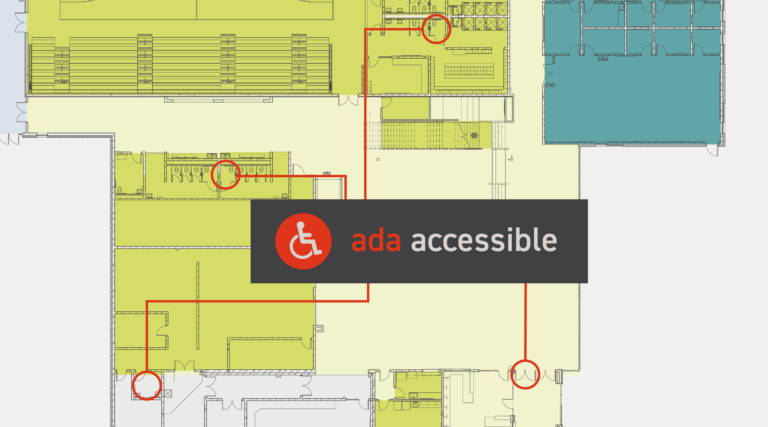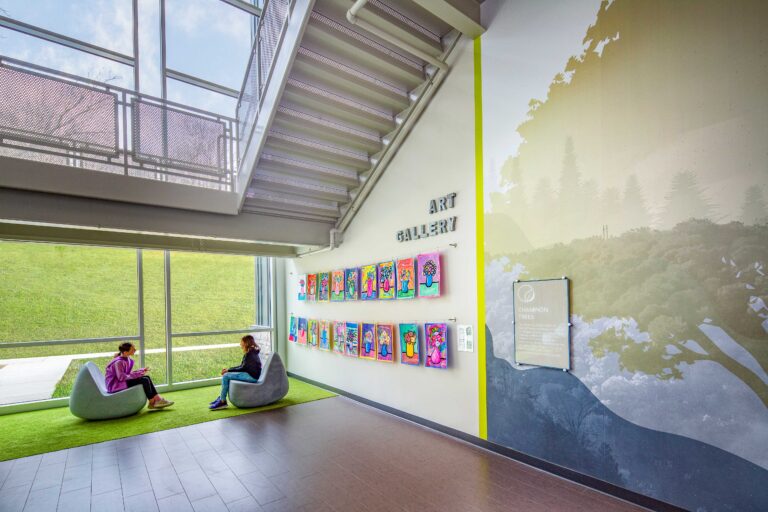In an age where our built environments profoundly impact our well-being, architects are increasingly taking on the responsibility of designing spaces that prioritize human health and comfort. We’re fortunate to have three architects on our team who have taken their passion for improving human health in the built environment to the next step by receiving their WELL AP credential. Their expertise is crucial in providing insight to help our firm design spaces that nurture the health of building occupants.
WELL Building Standards
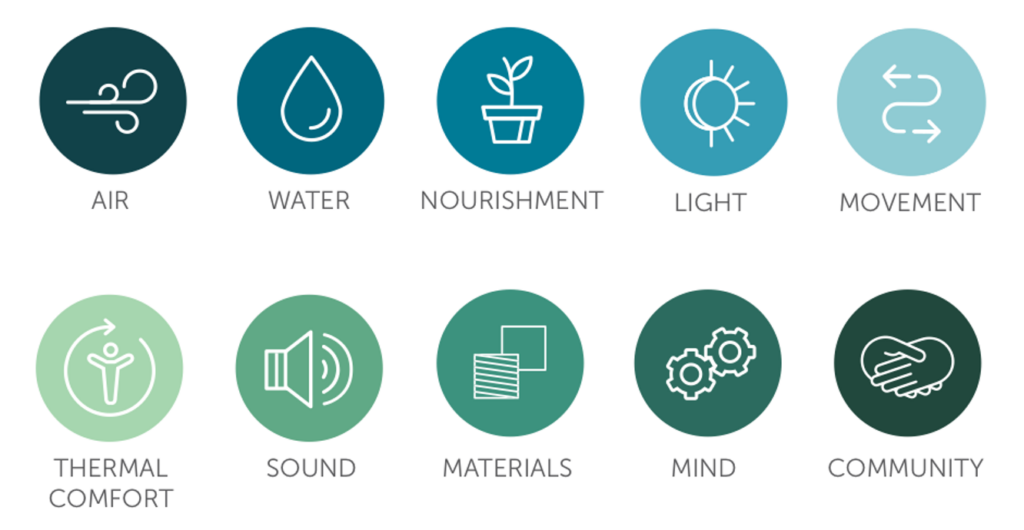
https://v2.wellcertified.com/en
The WELL Building Standard is a holistic, human-centric approach to human health and wellness in the built environment. With a focus on the occupants’ health and how an environment impacts the wellness of its occupants, WELL is a performance-based system for measuring, certifying, and monitoring features of the built environment that impact human health and well-being. WELL and LEED differ in that LEED focuses on buildings and the environmental impact, while WELL focuses on how the building affects people’s health and wellness. As Maren Burg, AIA NCARB, WELL AP says, “Healthy buildings = healthy occupants.”
Maria Welch, AIA, NCARB, WELL AP, design specialist, architect + associate, Maren Burg, AIA, NCARB, WELL AP, architect, and Nathan Derks, AIA, WELL AP, project leader + architect, have all received their WELL AP credentials. As advocates for the health and wellness of building occupants, they ensure students and staff feel physically, mentally, and emotionally healthy inside the building by using and measuring air quality, natural light, biophilia, and ergonomics — just to name a few.
Engaging clients in the design strategies that are being implemented to enhance the individual health inside the facility is essential. “It is important for us to educate our clients and those around us with research-based evidence…The built environment affects the overall health of its occupants. As architects/designers, we can use this research to inform our design recommendations and positively impact those who occupy our spaces,” says Welch.
Trends in Healthy Buildings
“We are starting to see a large increase in building/company owners prioritizing physical and mental wellness strategies, policies, and procedures into the design of their building,” says Burg.
Healthy elements such as biophilic and natural daylighting are currently being widely incorporated into building designs, but there’s a need for more elements to be implemented in facilities. “In the K-12 sector specifically, we’re designing flexible spaces that allow students [and staff] to make decisions about how they use their spaces based on any physical, emotional, or mental needs,” says Welch.
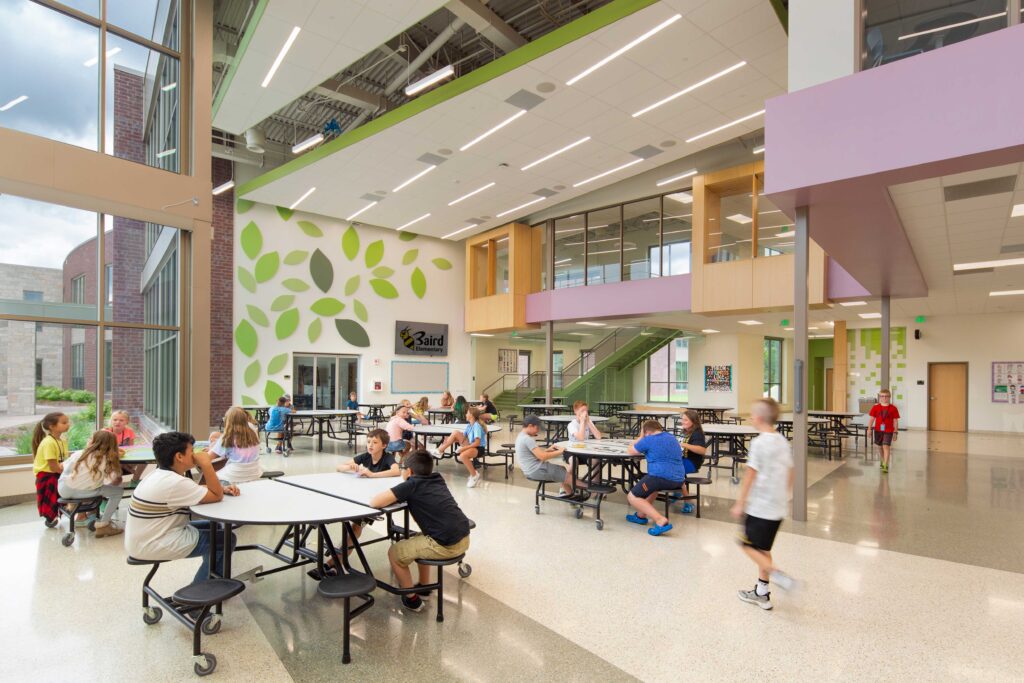
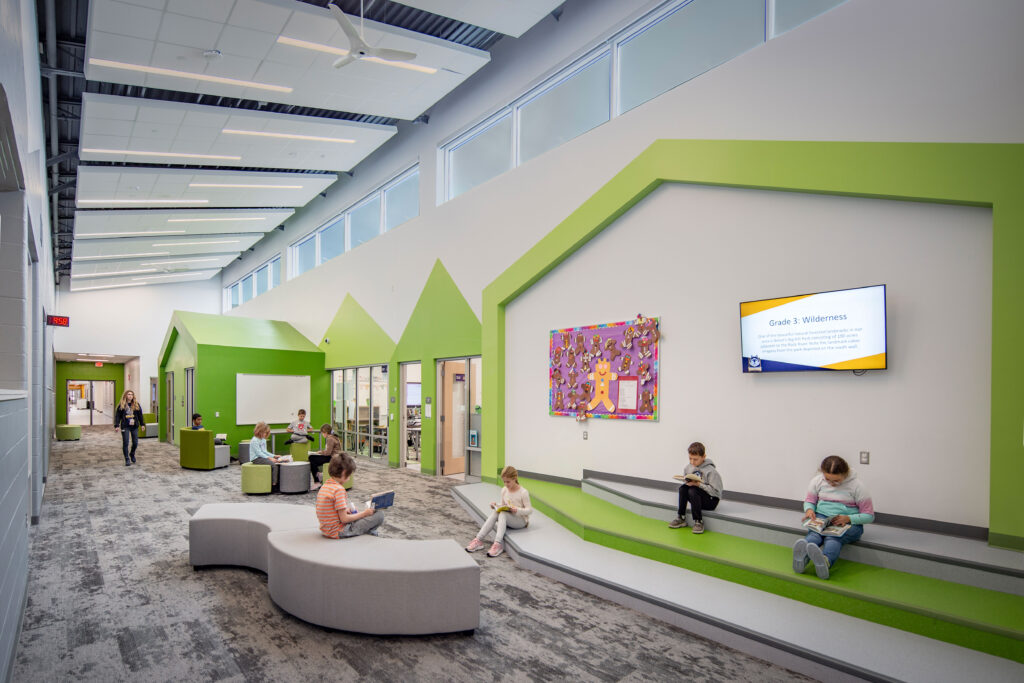
biophilic design | baird elementary
flexible furniture + spaces | garden prairie intermediate
Cafeteria designs have evolved into adaptable environments featuring diverse elements. Welch notes, “What used to be a loud lunchroom with inflexible furniture, is more often now a naturally lit, beautiful space that provides different zones and flexible furniture. Further, a student that has sensory concerns, may choose a zone that is quieter with softer seating options.”
With Maria, Maren, and Nathan leading discussions on health-conscious design in our projects, we are eager to have the facilities we design be WELL certified in the future.
Are you interested in earning the WELL AP credential? Learn more: https://www.wellcertified.com/well-ap/
